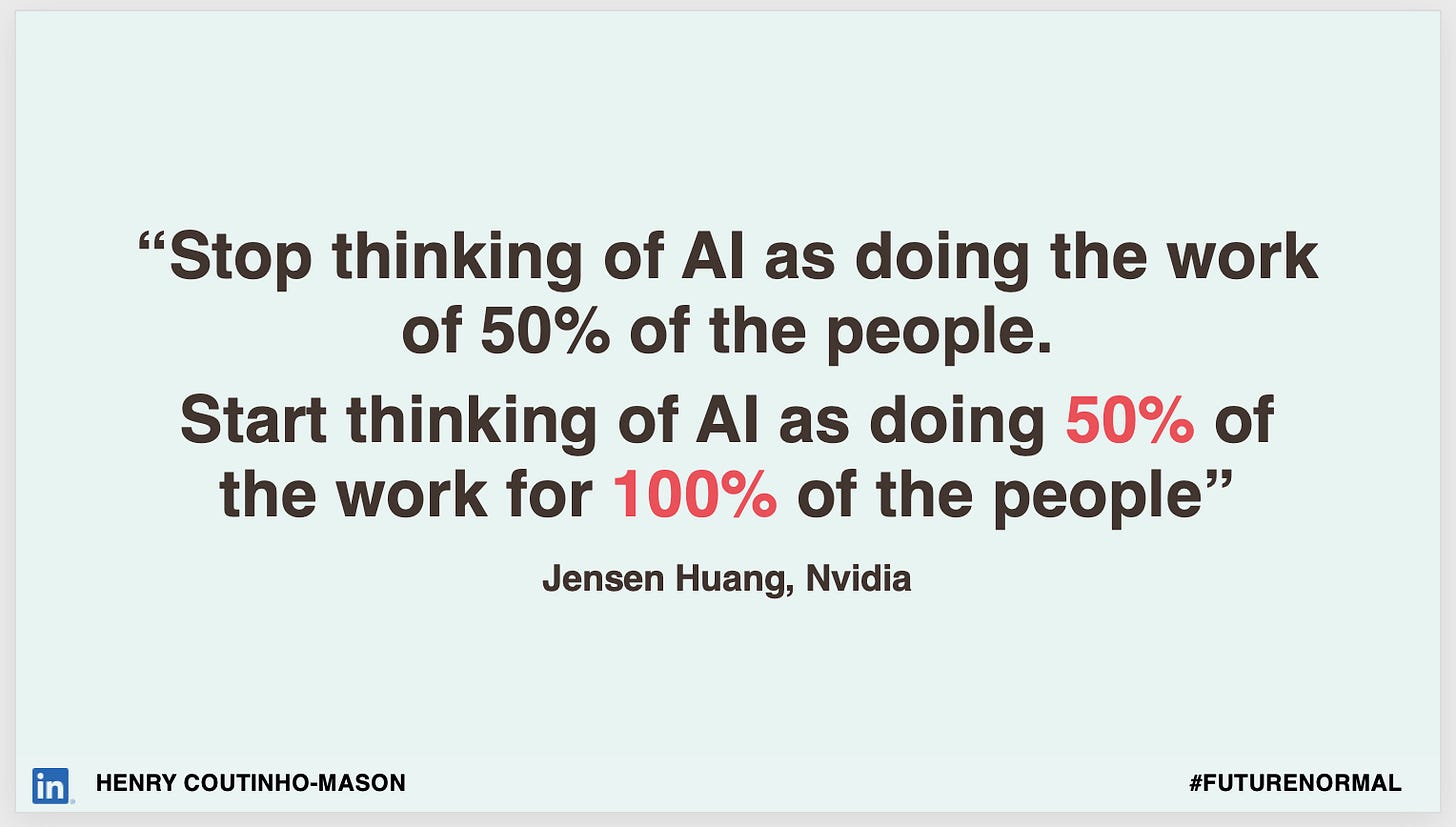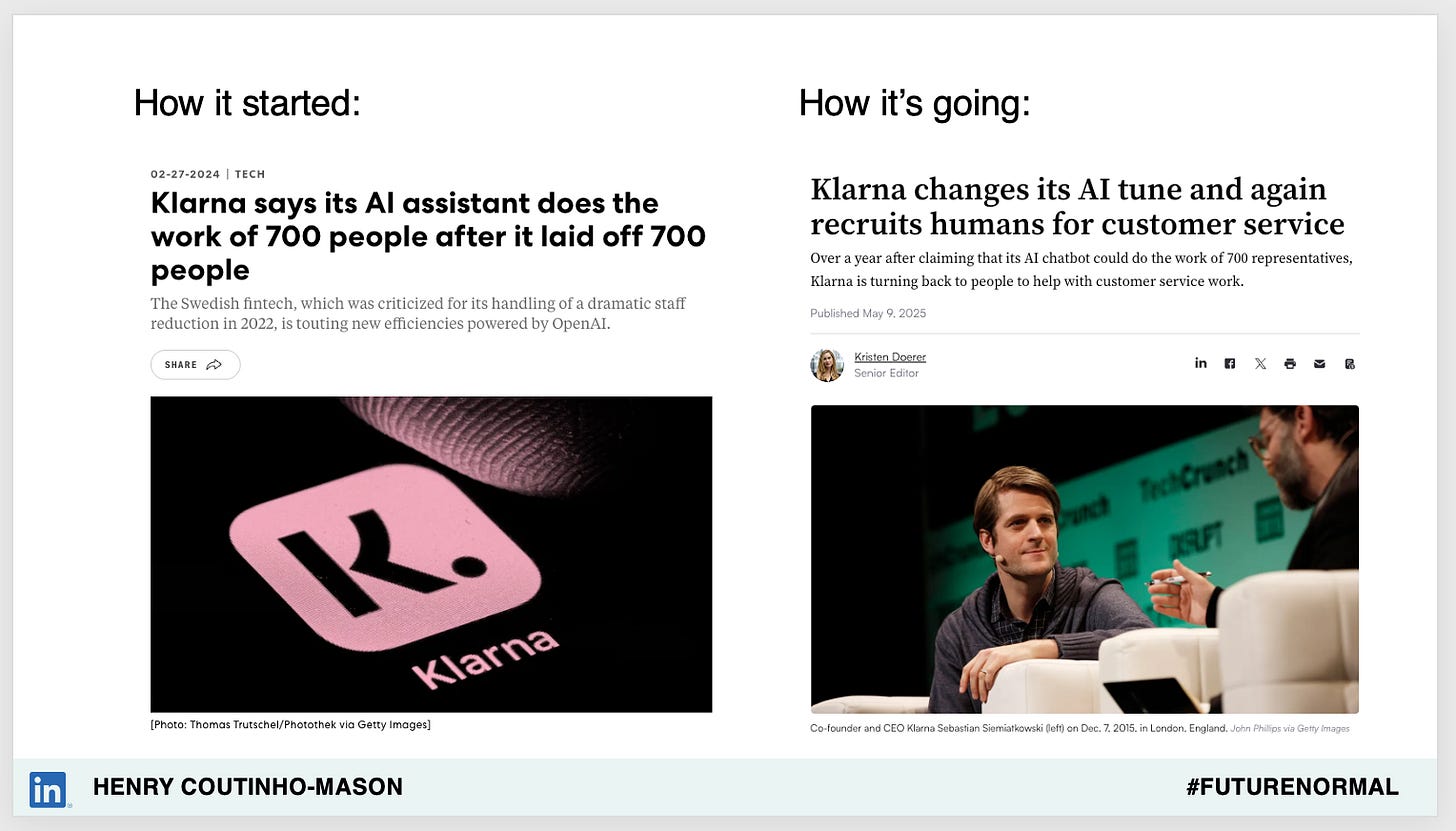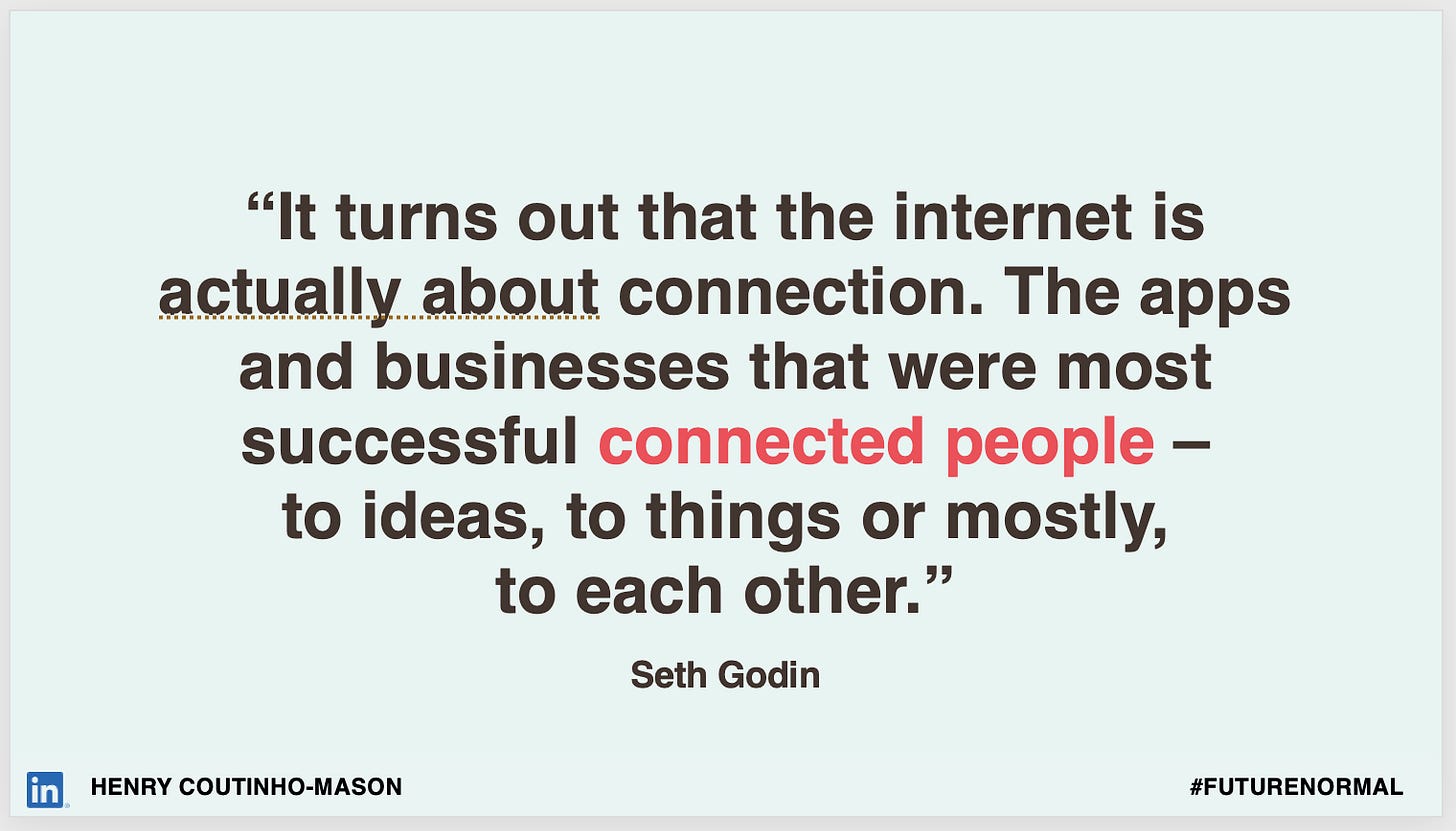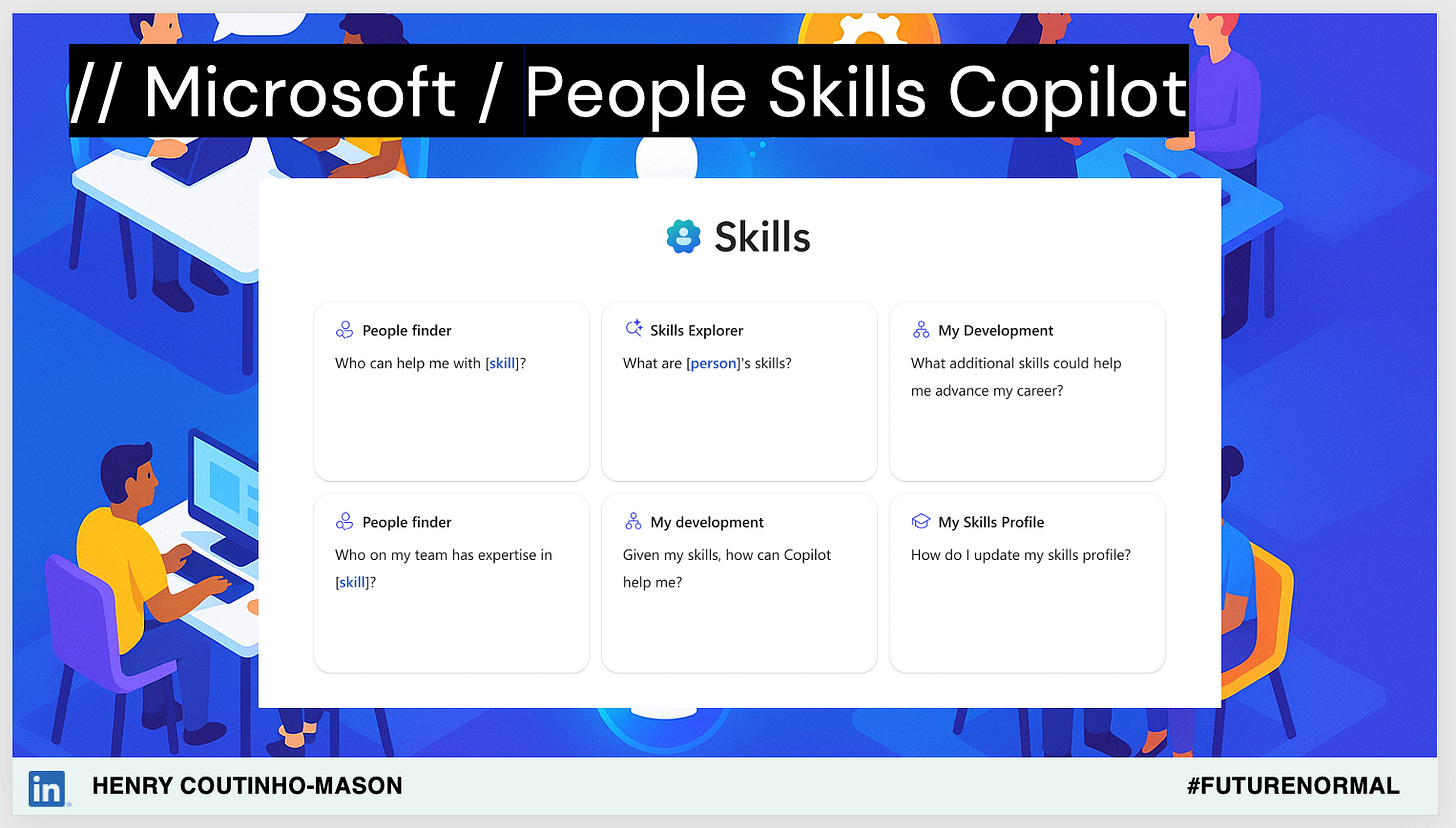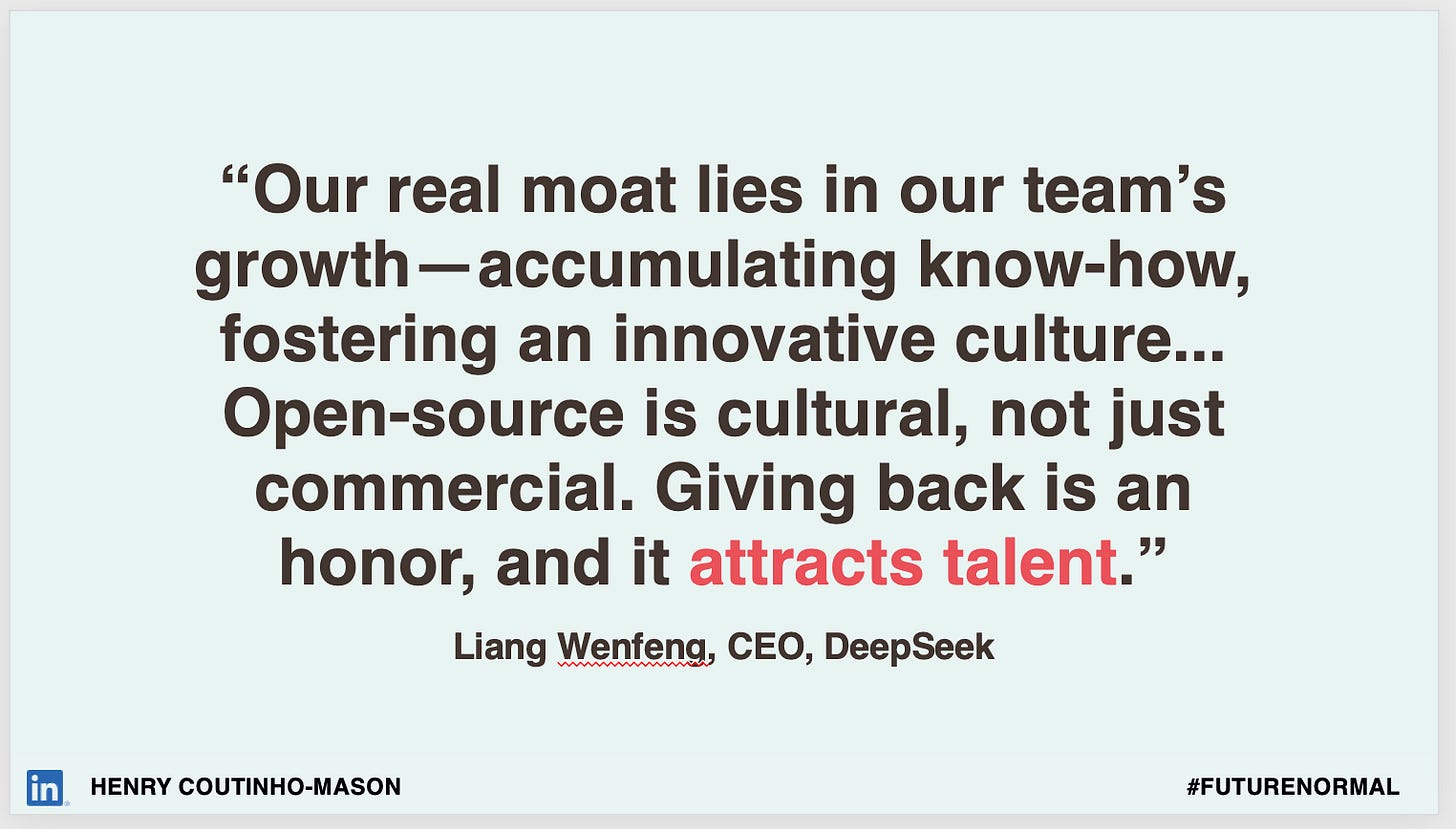How to sell AI to your team
Five non-obvious provocations & 10 inspirational slides to make your next AI strategy presentation one your team actually *want* to hear.
In the past two and a half months, I’ve given 15 presentations – primarily focused on how we can use AI to enable and encourage human flourishing (while also future-proofing your business).
To me that seems like a profoundly obvious ambition, yet I’m shocked at how much of the feedback shows that, for most people, my blend of optimism and practicality is a breath of fresh air.
I close my sessions with a slide reminding people that “the only future we can make is the one that we are able to imagine”.
As a business leader, it’s your responsibility to create a better future. But to do that you need to be able to imagine that better future. And crucially, you need to help your team imagine a better future too.
So to help you with this, here are selection of provocations, quotes, and recent innovations that I’ve shared that landed well with the audiences I’ve spoken to (based on how many people raise their phones to take photos!
Could you use them in your next AI strategy presentation?
At the least, you’ll flip the narrative from fear and skepticism to one of curiosity and excitement. You’ll inspire your team to see AI as something they want in their professional lives, rather than something you’re ordering them to use.
Note: I’m looking forward to a break from speaking over the European summer months, when I’ll be busy reading, thinking and writing about the next big ideas & photo-worthy slides I’ll bring to clients in September & beyond :)
Provocation #1: What if instead of zero jobs, there were zero ‘BS jobs’?
Most of the narrative around jobs is one of fear. However Gallup reports that global employee engagement is a whopping 21%. We’re fighting to protect jobs that most people don’t even like!
Of course, no one wants to lose their job. But what if we flipped the script and asked how we could use AI to do the bullsh*t tasks that drain so much of people’s energy today (note: I’m using the term BS in reference to David Graeber’s ‘Bullshit Jobs’).
The (sadly-too-common) fear is that your boss views AI as a way to cut costs. But Jensen Huang captured so powerfully, this is the wrong framing:
Yes, the shape of people’s jobs will change profoundly. But the goal should be to reduce or eliminate the BS tasks that your people don’t like doing! And then give them the ability to do the things that matter to your customers.
As Klarna’s CEO Sebastian Siemiatkowski admitting after leaning heavily into AI-driven layoffs: “as cost unfortunately seems to have been a too predominant evaluation factor when organizing this, what you end up having is lower quality. Really investing in the quality of the human support is the way of the future for us.”
Provocation #2: What if instead of using AI to replace human connection, we used it to help us connect with relevant humans?
Harvard Business Review reports that therapy and companionship is the top use case for gen AI in 2025. Cue countless thought-pieces on our atomised future normal (full disclosure: I’ve been writing about virtual companions for nearly 10 years now!)
However as this behaviour becomes more normal, I’ve come to believe that there’s a more optimistic side to this story:
People are turning to AI because it’s easier and less risky than building relationships with ‘real’ people. Virtual companionship is a symptom of our unmet craving for connection, not the ultimate solution. It shows our lack of ability to connect, rather than a lack of desire.
Seth Godin reminds us that we’ve been here before, with the shift from Web 1.0 (information), to Web 2.0 (social):
What does it look like to build AI tools that connect people?
One unexpected (professional) example I love sharing is Microsoft’s People Skills, which automatically infers employees’ skills from their work in Office 365 documents, emails, meetings and chats – in order to help leaders answer the deceptively simple but often fiendishly hard-to-answer question: “Who in my organisation can do [X]?”
The other example I love in this vein, is Boardy, the AI ‘superconnector’. But I’ve written about it at some length before, so won’t repeat myself again here.
Provocation #3: What if we used AI to unlock our collective imagination, rather than just greater efficiency?
Judging by the number of phones that get raised when I show the gap between C-suite and employee expectations when it comes to AI, Upwork’s study is onto something (even if most C-suite audiences laugh nervously, thinking “not my employees ;)
My provocation about how to close this gap is that we should be looking for use cases where gen AI’s unpredictability is a feature, and not a bug. For questions where there is no wrong answer.
We should be using gen AI to unlock people’s creativity and imagination.
Showing what this can look like in practice is the most fun I’ve had in my career. I give audiences just 60 seconds to sketch visions of the future (with a pen and paper!), and then use AI to transform, synthesise and analyse the entire room’s ideas. All live, all together.
It’s very powerful, as you’ll see here in this short clip from SXSW London:
Provocation #4: What if AI makes brand purpose even more important?
What does AI have to do with purpose? And hasn’t purpose become a dirty word in business in 2025?
My contrarian take is that AI will make purpose more important than ever – because it makes employees more valuable than ever. But the kicker is that it won’t make all employees more valuable.
AI will increase the leverage of world-class employees to previously unimaginable new heights. Put simply, you need far fewer people to create economic value.
Look at this chart of the peak number of employees at a handful of tech firms through the years:
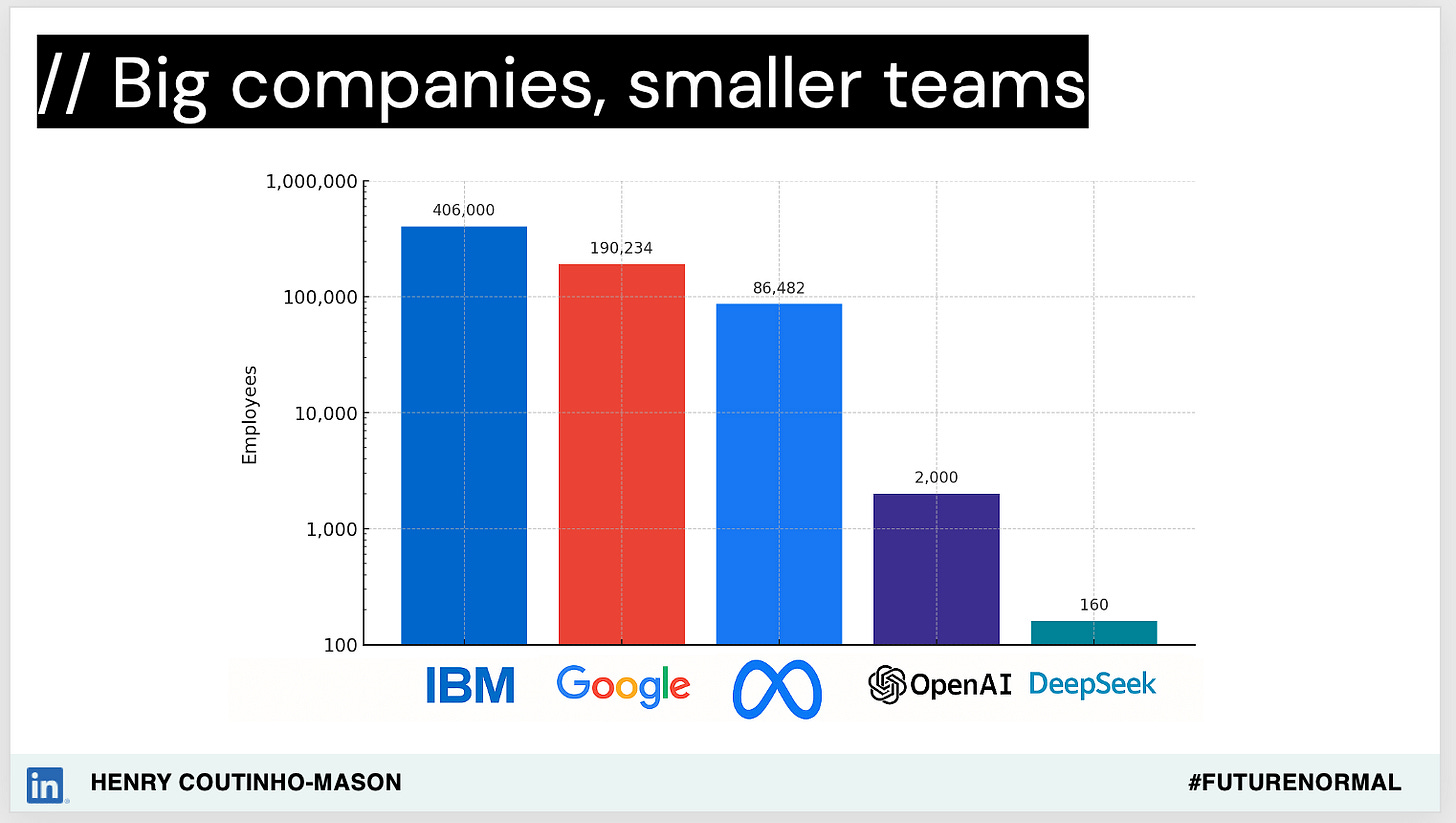
This makes the war for talent more acute than ever. Now, one way to attract and retain extreme talent is money. Lots of money – witness the $100 million pay packages being offered by Mark Zuckerberg to top AI researchers.
But the other route is to offer people a chance to change the world, rather than simply make already-rich shareholders and investors a bit richer.
Liang Wenfeng, CEO of DeepSeek, has spoken about how the AI startup’s open source strategy isn’t just a technical strategy, but its talent strategy:
The other exemplar example I refer to is Demis Hassabis and AlphaFold, DeepMind’s open-sourced protein mapping tool that’s revolutionising science. To twist Sean Parker’s famous statement, “a billion dollars isn’t cool any more. You know what’s cool? A Nobel prize.”
Now, you’re probably not running a frontier AI lab, leaning into open-source. But what starts with DeepMind and DeepSeek, will come to every industry.
World-class employees are going to be ever more valuable. Is money all you have to offer them?
Provocation #5: what happens when we can’t or don’t trust anything we see or hear?
I try to bring an optimistic, human-centred perspective to my talks. But sometimes you see something like Parallel Live, that’s so weird and dystopian that you have to remind people of the potential to use these technologies for more nefarious ‘connection’ purposes:
When it comes to the big picture trend here, I talk a lot about the optimistic upside to people’s inability to trust any form of digital content – it will undoubtedly drive a desire for real world experiences and smaller, more trusted communities.
But when it comes right down to the level of your next presentation, synthetic media is now a perfect way to show your team how AI can enable them to do things that would have previously taken a long time and cost them hundreds if not thousands of dollars.
3 months ago, I’d never used my own AI-generated videos in my talks (you had to find ones made by professionals on social media). The results weren’t good enough for us mere amateurs.
Now, I can generate deeply personalised videos that are ‘good enough’. Which means you can too. Head over to Google’s Veo 3 video tool, and spend a few minutes thnking about how you can bring your next presentation to life.
Here’s a short clip I made for a recent Fitness Technology Summit:
Or a quick CNN-style ‘breaking news’ clip about the event you’re at:
Note: I must credit the brilliant Riaz Shah for inspiring this.
Next – over to you.
The AI narrative is often split between extreme skepticism and dystopian fears, or irrational exuberance.
Both are possible, but the reality is likely to be more mundane. As Sam Altman said in his piece on The Gentle Singularity, “living through it will feel impressive but manageable. From a relativistic perspective, the singularity happens bit by bit, and the merge happens slowly.”
The best way to manage this bit-by-bit transition into the future normal is to create an organisational culture that’s fully engaged with AI.
You don’t need all the answers. I certainly don’t have them. But I believe if you can show your team that that you’re thinking about AI through a people-first lens, then they’ll show up with curiosity and agency, and make things happen.
Good luck.
Can I inspire your team to think differently about AI?
In the last 12 months I’ve delivered 30+ sessions, both live and virtually – from Baku to Brazil, Las Vegas to London.
My regular trend & innovation keynotes bring fresh, cross-industry, people-first perspectives to your audience.
VisuAIse Futures takes it one step further, turning a keynote into an interactive, ‘multiplayer’ creative experience.
One big leap forward that I launched at SXSW London: we now generate “Deep Innovation” reports for each participant – turning a room full of quick napkin sketches into personalised business plans, for each participant. All done live.
Your team gets a visceral experience of how AI can augment & accelerate their creativity. They feel engaged, while your organisation gets a wealth of useful insights into the collective vision of a room.
All done live, in less than 15 minutes.
Oh, and everyone also gets their ideas roasted in an AI-generated Whatsapp chat ;)
If you’re lining up your next all hands strategy session, or customer conference and want an accessible, fun, and useful creative AI experience then please do reach out directly to Renee Strom or check out my speaking site.
Thanks for reading,




